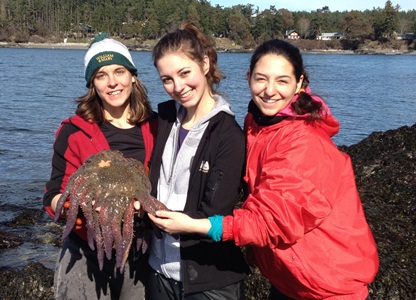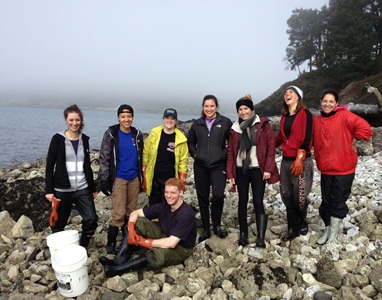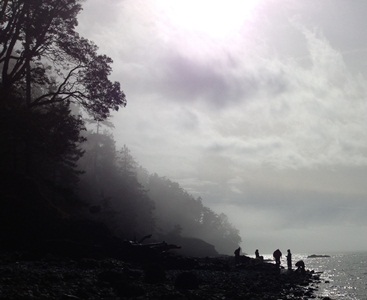Spring Break on the Left Coast: Marine Ecology at Friday Harbor Labs

 The course and its rigorous schedule was conceived and constructed by Dr. Allen. “This is the second time that I have done this 1-week course. I first did it in 2012 and hope to do it again in 2016. Right now there is tons of interest and the College is supporting us to make it affordable. The course includes four days of field lessons, led by students, and then two days of a class project that students design during the trip and carry out at the end.”
The course and its rigorous schedule was conceived and constructed by Dr. Allen. “This is the second time that I have done this 1-week course. I first did it in 2012 and hope to do it again in 2016. Right now there is tons of interest and the College is supporting us to make it affordable. The course includes four days of field lessons, led by students, and then two days of a class project that students design during the trip and carry out at the end.”
This year the class project was completed in Argyle Lagoon. “After visiting there earlier in the week, we decided to return to the lagoon and conduct a study on the differences in diversity and organismal size on large and small rocks in different velocity of water currents in the stream connecting the lagoon and bay,” noted Stacy Trackenberg ‘16. “We spent Thursday and Friday working on this project in the field and back at the labs where we analyzed the data and continued to look at and identify the different organisms we had brought back.”
Hans Vitzthum ’15 enjoyed evenings there most: “Once it got late and dark we often went down to the docks and dropped a night light into the water for nearly an hour and observed what was attracted to it (awesome stuff like huge polychaetes, larval urochordates, shrimp etc., etc.). The biodiversity is massive in comparison to the East Coast, and finding/observing/learning about cool and interesting critters is what I love.”

The rocky shores of the West Coast experience a tidal range about 4x greater than the intertidal marshes of Chesapeake Bay, and the cobble environments are quite different than the sandy bottom habitats common in Virginia. “We gained a better understanding of the ecology of the area and ecological principles overall,” Stacy said. “It was such a different experience than the hustle of the East coast where most of us were from, and by talking to locals we not only gained experience in the field, but also in the culture of a small island town that not many of us had ever experienced before. We also spoke with a few graduate students and researchers at the labs, and learned a lot about the different types of research possible and different opportunities for the future.”
Hans summed it up this way: “FHL is an oasis for anyone who loves marine biology. While there, for the first time in a long time, I was relaxed and enjoyed the biology I was involved in. It was the most enjoyable part of my time at W&M involving my bio major!”
 Skip to main content
Skip to main content
